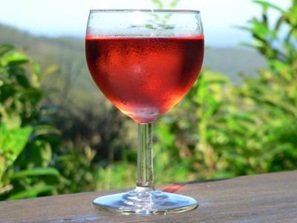There is a tendency among those who know no better to serve every kind of drink at as close to sub-zero temperatures as possible. What do you say to your dear friend who, when you arrive at their house for dinner, takes your proffered bottle of fine claret and declares, “Don”t worry, we'll put that straight in the fridge, it'll be nice and cold by dinner time!”
 Heathens!
Heathens!
Yes, there are many heathens among us. We just have to remember, that when it's red wine, you can at least allow it to stand in the glass until it has reached an acceptable temperature. And very few people don't realize that white wine should be served cold.
So, Why All the Fuss?
When we taste, we taste four main elements – sweet, salty, sour and acid. (Eastern cultures add one more, savory.) To enjoy all the subtleties of flavor, we need our olfactory organ, in other words our nose. Wine doesn't release its full array of flavor unless it is served at the temperature at which it releases those fragrances and aromas best; it's that simple.
The Temperature for Reds
In general terms, we talk about reds being served at room temperature. But which room? A Scottish croft heated by a dim peat fire on a snowy February night? Or a veranda on a summer's day in tropical South America, where at twelve noon, the natives swoon, and no further work is done?
It's not worth being obsessive, although when you are enjoying fine wine in private, a little obsession is acceptable. When serving red wine in company, or drinking it in a restaurant or bar, the wine should be served just a few degrees lower than 60 degrees Fahrenheit. Allow it to warm very slightly in the glass, enjoy the aromas that develop, and then start to sip when it has warmed up a couple of degrees. Sweeter red can be a little warmer, sparkling reds a little cooler, roses a little cooler still.
The Temperature for Whites
Warm white wine tastes flat and dull, quite horrible. Whites are nicest served at around 45 degrees Fahrenheit. Much colder, and they will have no discernible bouquet, and you may as well drink water or fruit juice. So, keep white wines in the refrigerator for several hours before you plan to serve them, and if they have got too cold, allow the temperature to rise a little by taking them out before you intend to serve them.
Ice in Wine
If you live in a hot climate, and are enjoying some of fresco wine drinking, then it is by no means foolish to lob a few ice cubes into your wine to keep it at a drinkable temperature. We are of course talking about quaffing wines here, not fine wines. Plastic ice cubes can be used if you are concerned about diluting your wine, but, as you are likely to be drinking at a fairly steady pace when it's warm, you might actually appreciate a little water in your wine, as is traditional in all wine producing countries on informal and family occasions.

 Heathens!
Heathens!